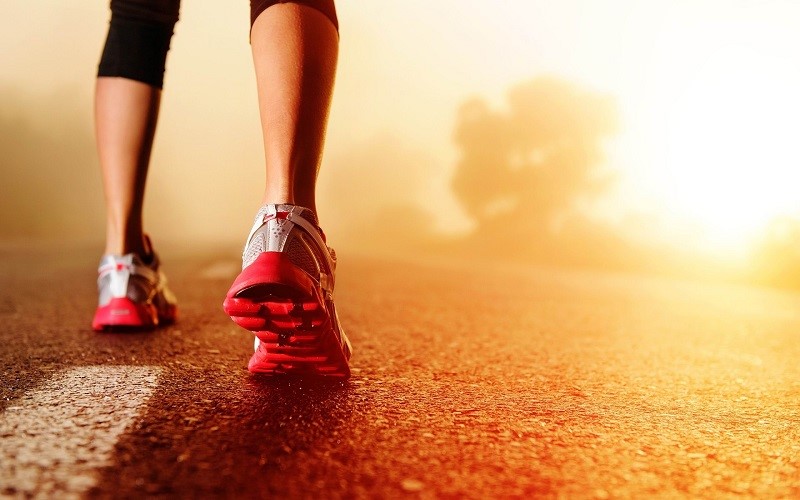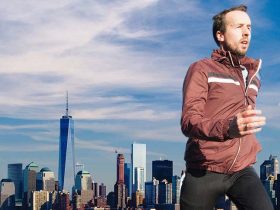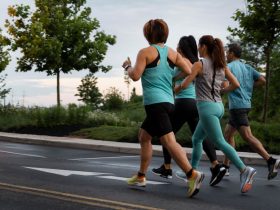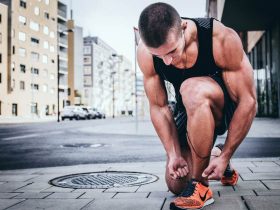Buying athletic shoes, not all of us think about the right choice. We have shoes. Is it comfortable, beautiful? Bought. But not all shoes have the same purpose,for example, employees of CSG Renovation https://csgrenovation.ca/our-services/condo-renovation/ use special reinforced sneakers for the comfort of work, but it is not recommended to run in these shoes. Because of the wrong decision there is fatigue in the legs, pain, discomfort, problems with the spine, joints. How to choose the right shoes for sports? What should I pay attention to?
Every day the number of adherents of a healthy lifestyle is increasing. We think about proper nutrition, eradicate bad habits, go for a morning jog, participate in running competitions, work out with a trainer in the fitness room, enjoy meditation at yoga. Choosing sportswear, people, first of all, pay attention to the quality of tailoring, fabric composition. But what about the shoes? Is it enough that it fits well when you try it on?
No, that’s not enough. The wrong choice of sports shoes entails physical discomfort, contributes to the destruction of joints (osteoarthritis), damage of the intervertebral discs, the rapid fatigue of the legs. Each type of sneaker is designed for a particular sport. If you run a marathon, speed, like long runs for fun or, conversely, are engaged only in the gym – in each case the choice of shoes come close to studying all the information, because this affects not only the result of exercise, but also health in general. So, now in detail.
Running shoes for running: how to choose
Sport running shoes are necessarily equipped with cushioning. In most models, it is located in the heel part, but sometimes it is found in the toe area. If you use products of well-known brands, the label will indicate the presence of cushioning, its location.
The sole is reinforced by durable, abrasion-resistant inserts (often they are made in a different color), located in the areas of greater stress: the heel, the outer part of the sock. It must be flexible and sturdy so that the athlete does not stumble during a run due to the immobility of the foot. The fabric surface in the area of bending in sports models is soft, elastic, good air permeability.
- High-quality athletic running shoes are not made of leather or other heavy materials. It should be lightweight, easy to wash.
- The back of the sneaker should be rigid. When trying on pay attention to the fact that it does not press on the Achilles tendon, do not cause discomfort. Otherwise painful sensations and rubbing in this area are inevitable.
- If you mentally draw a line down the center of the sneaker, the ideal shoe has its laces not in the middle, but closer to the inner part of the foot. It is very good if the lacing loops are not fixed by a common rigid bar, but are in different cells. Then the athlete has the opportunity to adjust the width based on the characteristics of his foot.
- The insole should be easily removable so that it can be replaced by another of the same kind or by orthopedic.

Sneakers for men and women
Women’s athletic shoes are lighter in weight, with soft cushioning. The heel is made higher to avoid damage to the Achilles tendon. Men’s athletic shoes have wide pads, so do not look for your size in the department for the other sex (even if you like the color scheme presented). If sneakers do not have cushioning, they are the so-called marathon shoes. They are designed for short competitions, running short distances, when it is important to develop speed. Designed for a small weight of the athlete (up to 80 kg), do not support the foot arch.
If you feel discomfort in your feet, consult your podiatrist. During the examination he will determine whether there is flat feet, other pathologies, find the degree of pronation or supination. Depending on this will help with the choice of a comfortable model.
Runners with excessive pronation, low arches are recommended shoes with supinator, which will reduce the likelihood of damage to the knees. Athletes with the opposite problem supinator is contraindicated – it increases the risk of twisting the foot.
When running in the woods, on the ice, off-road are desirable reinforced tread, increased rigidity of the sole, additional spikes. They will prevent slipping, provide better traction, more recoil, protect athlete’s legs from stones, snags and other dangers. In addition, in such sneakers mandatory side support, compacted mesh, designed to reduce the likelihood of sprains.
Shoes for indoor activities
For training, sports games in the gym choose summer models made of lightweight materials. Otherwise you’ll feel hot and sweaty.
- Basketball. Sneakers should be high to protect the ankles. The sole is thick, at first glance bulky.
- Tennis. Sneakers with a thin, flat sole, no curves. The sock is tightly stitched. Have an additional padding, sturdy side parts.
- Yoga, Pilates. For comfort in class, buy slippers, calipers. Athletic shoes will get in the way.
- Dancing. Sneakers or athletic shoes with non-slip, flexible soles are excellent for training.
- Soccer. Choosing shoes, determine on what surface you play. If the field is equipped with a hard grass surface, then buy cleats labeled HG (Hard Ground) – distinguished by the presence of the classic round spikes. If the game is played on asphalt, the sole with spikes is undesirable. For most synthetic surfaces, boots marked FG (Firm Ground) are preferable: four classic cleats in the heel and nine in the forefoot. For a child, choose a boot marked MG or AG that has 24 cleats, which provide a long and comfortable stay on the field because the pressure on the foot is distributed evenly.
Sneakers for everyday wear
You can buy these shoes in any shoe store. It has a thin sole, not designed for heavy loads. In everyday sneakers uncomfortable to run, play sports. Therefore, do not expect much from a pair bought not in the sports department.






